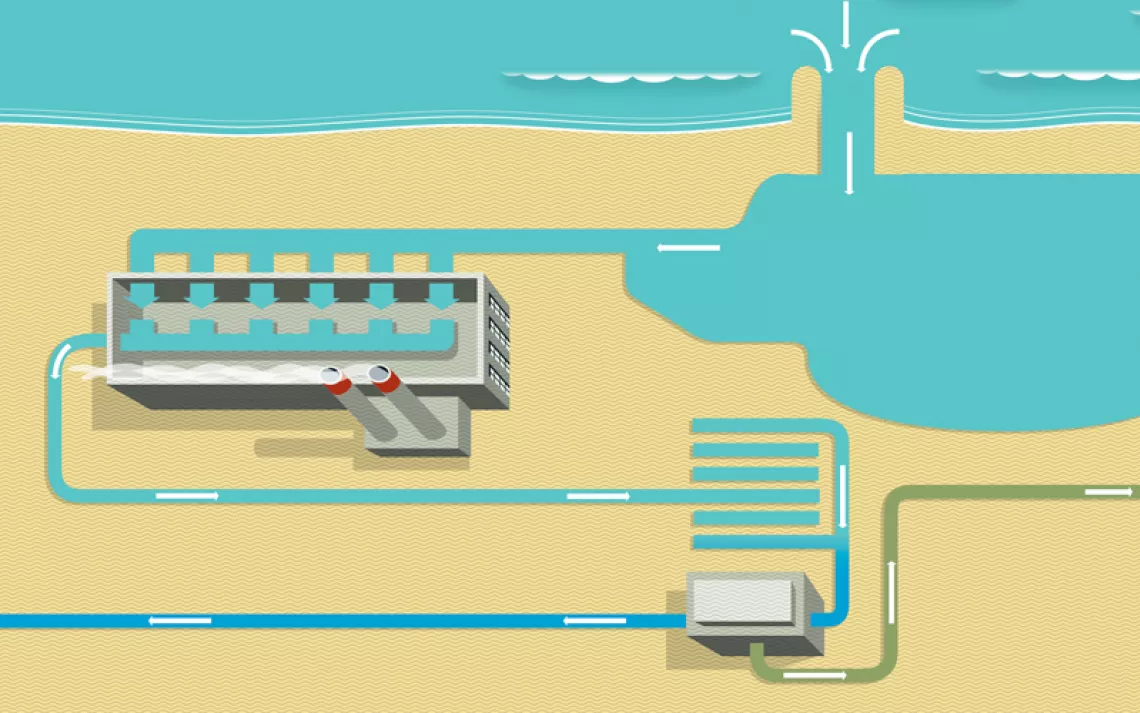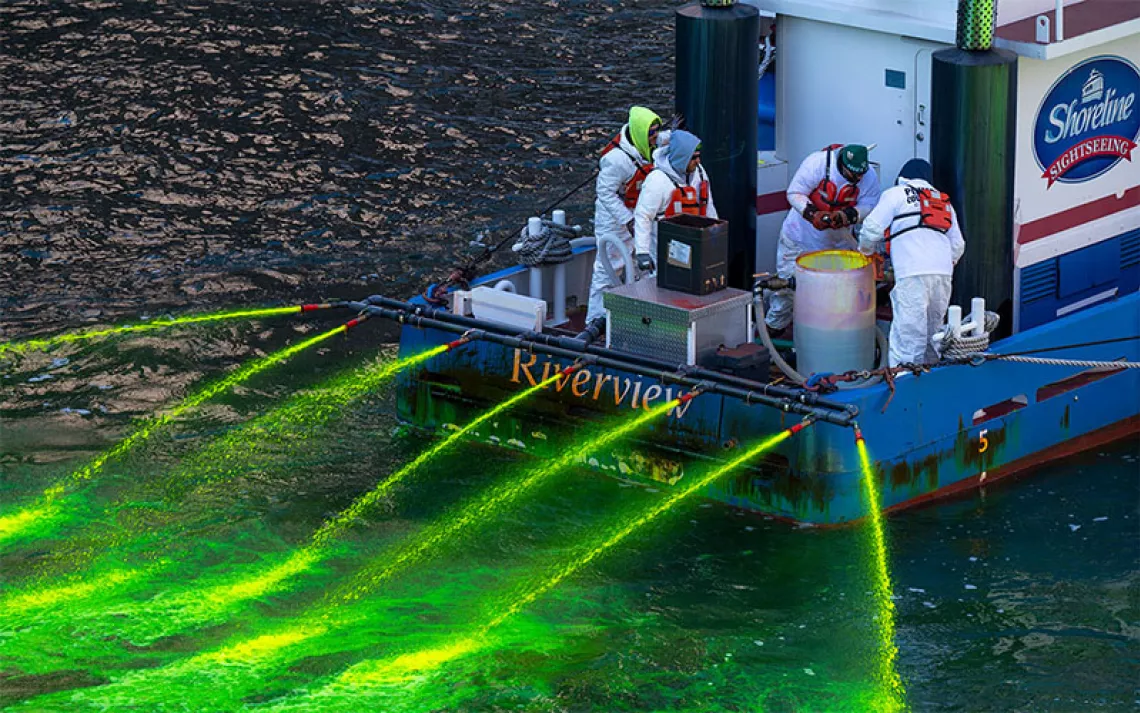In Flint, Michigan, a Surprising Oasis Awaits
Some locals say the Flint River is a gem hiding in plain sight
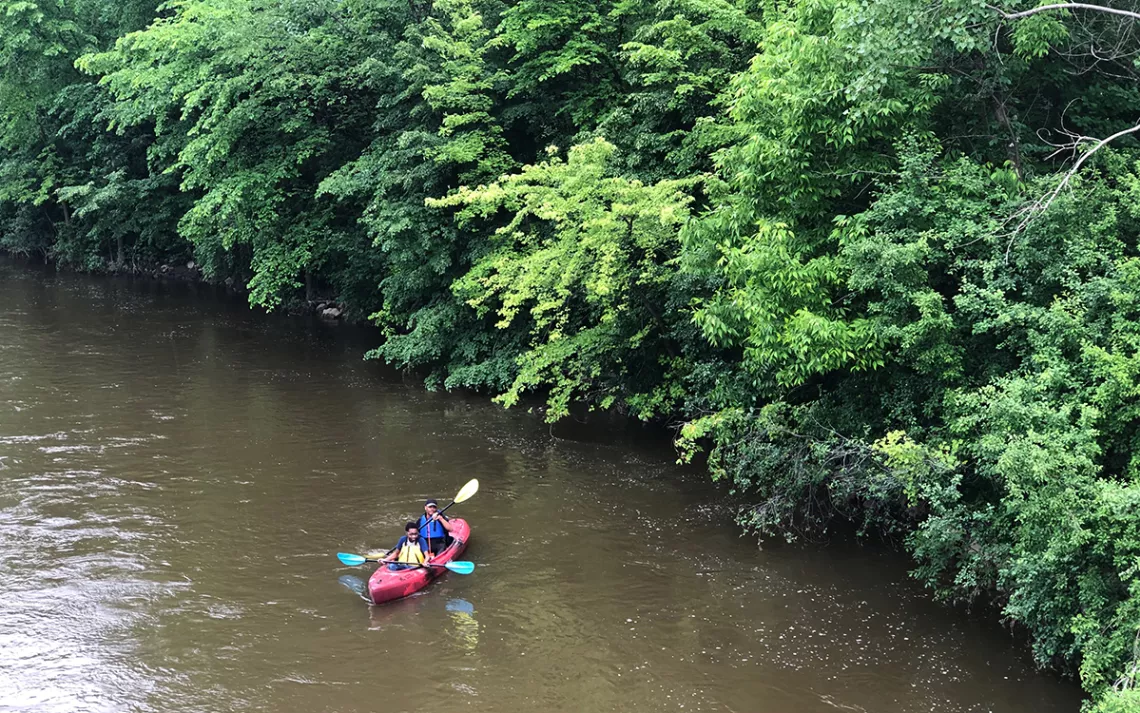
Despite the fact that much of the 3.25-mile Kayak Flint course is in a city, there are many wooded areas with wildlife, including bald eagles. | Photos courtesy of Patrick Hayes
During the Flint water crisis that gripped the Michigan city in 2014 and 2015, Rebecca Fedewa of the Flint River Watershed Coalition spent months contacting reporters with a simple, persistent message: The Flint River did not cause the water poisoning and accompanying public health catastrophe.
The river water itself, Fedewa insisted to anyone who would listen, met federal and state health standards. But when the river water was improperly treated by ill-prepared local and state water treatment officials, lead particles leached from Flint’s aged infrastructure into the water supply.
It was the 2014 cost-cutting decision to switch City of Flint water sources from Lake Huron to the Flint River without changing water treatment protocols that caused the water crisis.
“I spent probably three months contacting media outlets just to educate,” Fedewa said. “Eventually, most of them started adding, ‘because the water wasn’t properly treated,’ in their reporting.”
Fedewa was providing context to reporters but also fighting to protect the work her organization has led since the late 1990s to restore, preserve, and educate the community about the Flint River and the ecosystems it supports. The reality, Fedewa and other Flint residents say, is that the Flint River is a beautiful place. The river has been regularly tested and analyzed for pollutants. Many species of fish, birds, and wildlife make their homes along the river. The Flint River was one of the first six waterways in Michigan to receive a Michigan Water Trail designation, and the watershed coalition is hoping for a national designation in the fall of 2019. Despite its negative reputation, the Flint River is a scenic, lovely, largely healthy, and resilient urban ecosystem.
Even before the water crisis maligned the river, convincing Flint residents that it was safe for recreational purposes was not easy. The city’s industrial history as the birthplace of General Motors had conditioned many to believe the river is polluted. In 2016, for example, Flint native Deondre Parks led his South Dakota State University basketball team to the NCAA Tournament. The Argus Leader, a newspaper in South Dakota, asked Parks about his hometown and the water crisis in a profile of him. “They thought it was OK to have the water come from our river?” Parks told the newspaper. “There’s been dead bodies floating in that river. There’s rusted cars piling up in it.”
The belief that the river was polluted has been passed down in Flint for generations, and not without cause. In 2018, testing at a former GM site on the river, Buick City, revealed that PFAS chemicals were entering the river from two sewer outflows (PFAS is a group of synthetic chemicals, per- and polyfluoroalkyl substances, that can accumulate in the body and cause adverse health effects). The RACER Trust, which manages Buick City among its approximately 7,000 acres of former industrial properties nationwide, is tasked with continued testing, cleanup, and remediation of the site. The watershed coalition, faculty and students at the University of Michigan-Flint, and other organizations routinely collect samples and monitor fish in the river for signs of contamination.
Even the design of the city itself keeps the community insulated from gaining a better understanding of the river. In some places, the river has been channelized with concrete banks that are unattractive and uninviting.
But thanks to the persistence of the watershed coalition, combined with the efforts of community partners and local elected officials, a vision of the river as the centerpiece of Flint’s downtown revitalization is becoming a reality. “This community for a long time kind of turned away from the river; it was not designed for public access,” Fedewa said. “There wasn’t really anyone out there helping to provide access, but more and more people were hungry for recreation and fishing opportunities.”
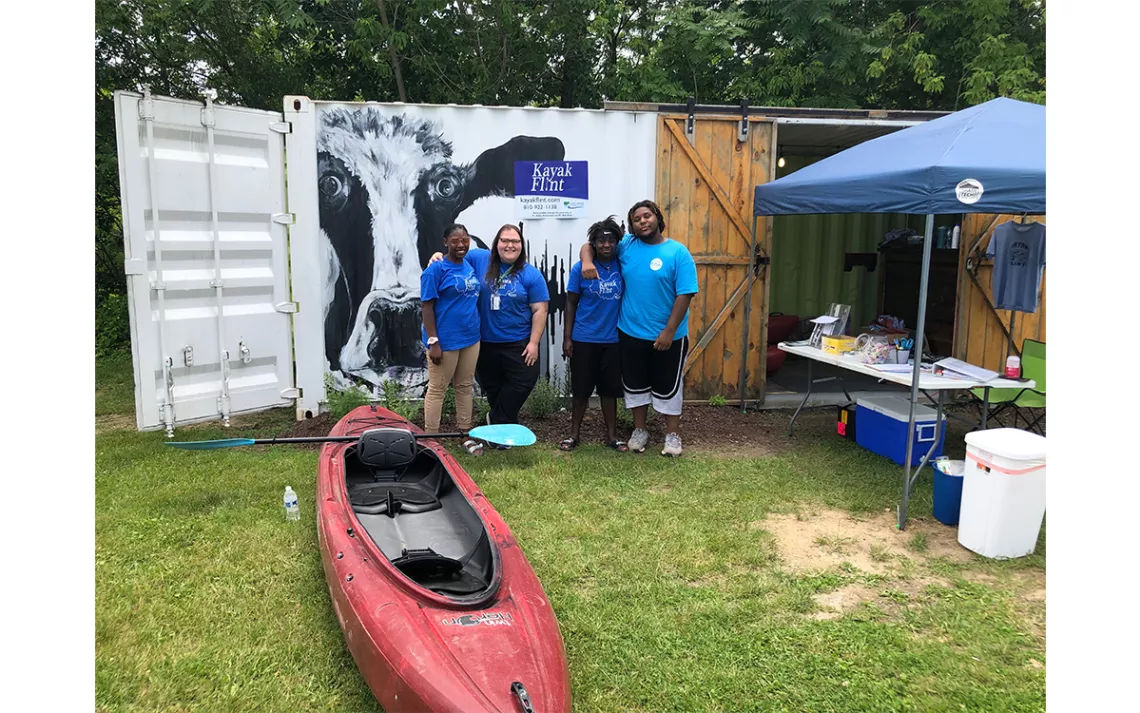
Kayak Flint, a new livery in Flint, opened in the fall of 2018 and offers low-cost kayak rentals for paddlers interested in traveling the Flint River. Staff members pictured (left to right): Katia Kenney, Anna Darzi, Corinna Edwards-House, Marcell Simmons.
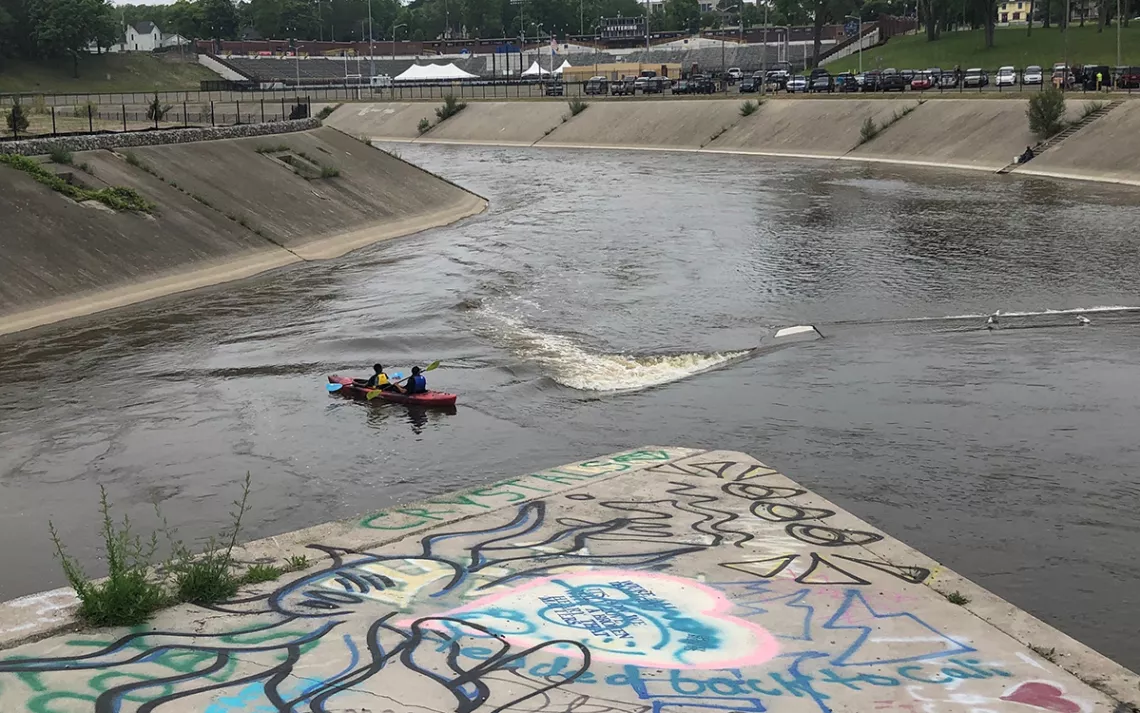
The convergence of Swartz Creek and the Flint River provides paddlers with mild rapids to navigate while on the Flint River.
When it was founded 21 years ago, the watershed coalition began offering scheduled group paddles, which have grown from about four per year to more than 20 annually. A core component of the coalition’s mission has been a youth education program that, in partnership with local school districts, has students do water testing to learn about the river. “We do our best to get as many kids as possible in this area involved,” Fedewa said. “The program is the first time many kids actually look at the river as more than something they drive past in a car.”
In the fall of 2018, the organization launched Kayak Flint, a livery on the banks of the river at a local brewery. The boat shed is the start of a 3.25-mile paddling route that reveals an entirely different side of this industrial city. The route begins with mild rapids where Swartz Creek flows into the Flint River, and from there paddlers float past “Chevy Commons,” a park with a sprawling trail system that was once the headquarters of GM’s Chevrolet Division and was the site of the famous 1936–37 sit-down strike. Then the scenery quickly becomes wooded. Lucky or especially sharp-eyed paddlers might spot some of the many species of wildlife that live in or near the water, including foxes, beavers, bald eagles, and kingfishers.
“That’s our main mission in doing this, to get people on the river so they see it as a beautiful natural resource that’s clean, healthy, and available to everyone so they feel some ownership and pride in it,” said Sarah Scheitler, manager of Kayak Flint.
“To have a water trail right here (in Flint), that’s fabulous,” Flint Mayor Karen Weaver said in a recent promotional video. “We are looking forward to doing so many things right here on the river."
The new and expanded programs to encourage people to explore the Flint River is just one element of a larger plan to revitalize the city. Beginning in 2009, Flint and Genesee County Parks unveiled the Flint River Restoration Project. The vision included removal of a crumbling dam from the University of Michigan-Flint’s campus, restoration of a downtown park to make the river more accessible for paddlers, and conversion of the Chevy in the Hole industrial brownfield into Chevy Commons.
The project, estimated to cost nearly $40 million, was ambitious, especially for a city that is notoriously cash-strapped and has a dwindling tax base due to population decline. So far, only Chevy Commons is near completion. But the broader vision, as well as a desire to change negative perceptions of the city, has sparked micro-developments led by ambitious community members.
“[The water crisis] caused really toxic stress on the community; it did damage to the psyche of people in the city,” said Michigan Senate Minority Leader Jim Ananich, a Democrat who represents Flint. “We have to highlight the positives. There is a lot of cool stuff in Flint, especially many new things that promote healthy living.”
A recent June weekend at Chevy Commons provided evidence of the opportunities available on the river’s banks. A dozen local kids participated in a Soapbox Derby. Kayak Flint was open, with paddlers navigating through the park. And the Crim Fitness Foundation—a health and wellness organization that runs community education programs in Flint schools and has hosted a yearly professional 10-mile race since 1977—was hosting its first Cycle Fest, a community bike ride that brought hundreds of cyclists into Flint.
“From just an entrepreneurial and attraction standpoint, young people want vibrant places, and we have those things in Flint,” Ananich said. “There are exciting and fun things to do here.”
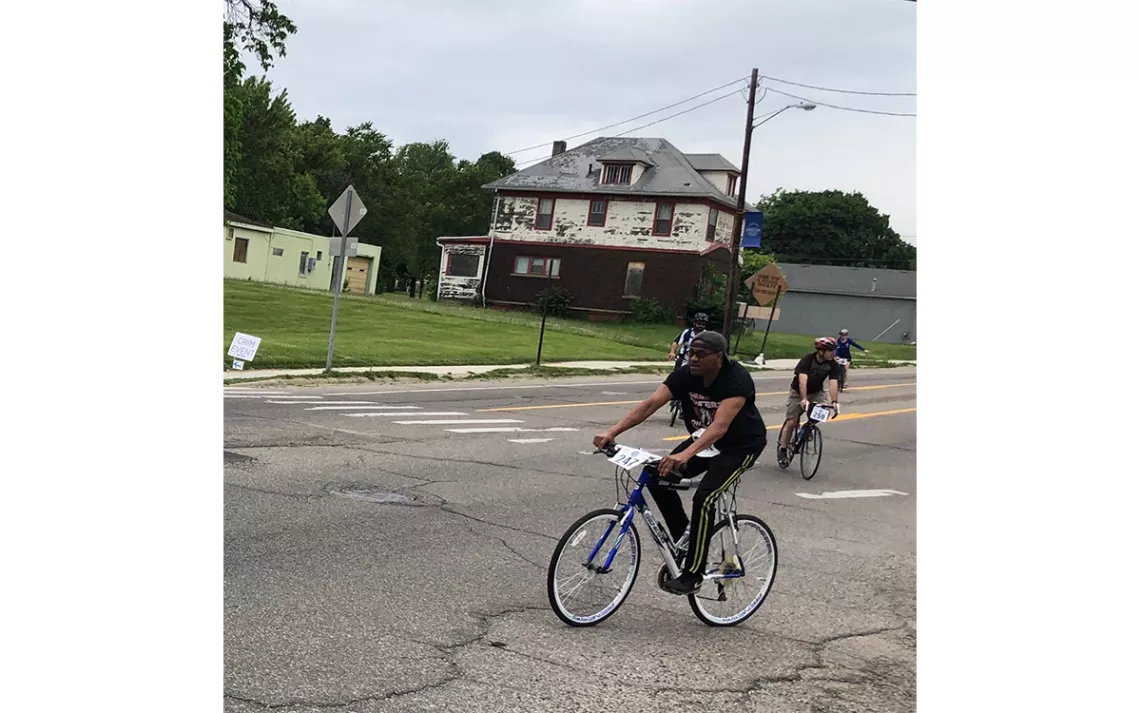
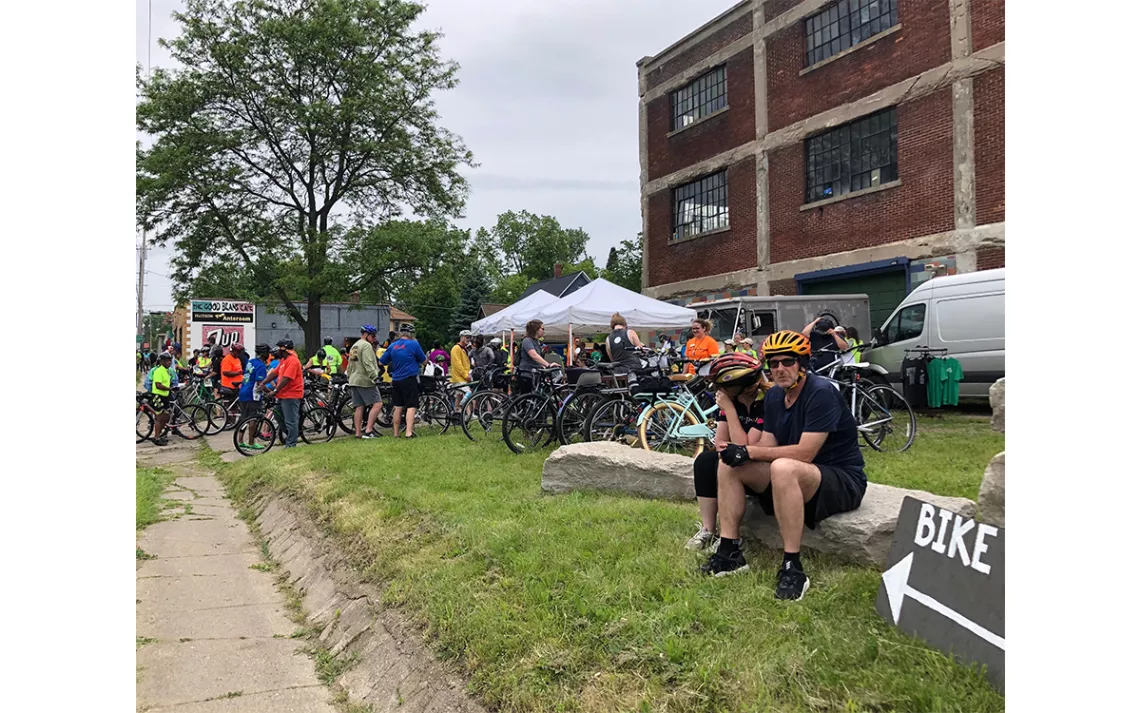
Hundreds of cyclists participated in Flint’s inaugural Cycle Fest on June 16, 2019. The event offered multiple courses featuring many of the city’s new paved trails and bike lanes.
Another local cycling group is Flint City Bike Tours, which was started by Flint resident Emily Doerr to give city residents and visitors a chance to see the diverse sections of Flint by bike. The city’s relative flatness and a growing number of bike lanes make Flint friendly to even novice cyclists, Doerr says. “The infrastructure was built for 250,000 people, and we have 100,000 now, so you have a lot of side streets or even four-lane roads that really only need to be two-lane roads where you have a lot of space,” Doerr said. “Biking in Flint is pleasant and easy.”
Although the community leaders’ focus on recreation and healthy lifestyles isn’t unique to Flint, it takes on an added importance in Flint in the context of the recovery from the water crisis. Healthy diet and exercise are proven ways to mitigate the effects of lead poisoning. While the full scope of the health impact and damage done to the children exposed to lead in Flint is still being assessed, creating recreational opportunities and programs for Flint’s residents, especially kids, is vital.
Flint resident Angela Stamps started biking in 2006 while living in Los Angeles. Upon moving back to Flint, Stamps wanted to launch a nonprofit that would inspire Flint kids to simply get out and move.
“I picked obesity among teenagers to work on,” Stamps said. “Living in California, access to fresh vegetables and that sort of thing, I took for granted. When I came home, I had no idea how easy it was for people to fall into bad [eating] habits.”
So Stamps launched the Berston Bicycle Club in 2012. It is a nine-week summer course based at Berston Fieldhouse, a historic community center in Flint. Teens learn bike safety and maintenance, go on rides throughout the city using Berston’s fleet of bikes, learn about nutrition and healthy living, and, upon successful completion of the program (including riding 270 miles by the end of the sessions), receive a brand-new bike. It’s challenging—and that’s the point.
“It’s not supposed to be easy,” Stamps said. “Us breaking down in the road gives us the opportunity to learn lessons in their peer groups, socialize, problem solve. I like to show them where we go on a map, so if you get lost, you’ll still know where you’re going without needing GPS.”

Angela Stamps founded the Berston Bicycle Club in 2012. The nonprofit is aimed at promoting healthy lifestyles among teens. Participants who successfully complete the nine-week program receive a free, brand-new bicycle.
The students in the club often come from some of the city’s poorest neighborhoods, and Stamps makes an effort to show them all of the city. “I like explaining to them and showing them how small our town is—it’s only 34.4 square miles,” Stamps said. “I love seeing how they evolve and the life skills they learn.”
For the Berston Bicycle Club, like other outdoor recreation organizations in Flint, accessibility and affordability are key. When Kayak Flint first launched, for example, the enterprise based its rental pricing on other paddling outfitters in Michigan. When a community activist pointed out that the $20 rental fee to lease a kayak and explore the 3.25-mile course would make it difficult for many Flint families, Kayak Flint adjusted its pricing and offered a discounted rate for Flint residents. “We listen to feedback and are also looking for people to help underwrite those costs even further,” Fedewa said.
On the bike tours she leads, Doerr tries to show more than the redeveloped and economically thriving areas of Flint. She wants to be able to show visitors the full picture of the city. “I am pro-Flint and positive but don’t want to just gloss over the difficult topics either,” Doerr said. “Some people are scared to go in the neighborhoods or have a bad perception, but the neighborhoods are really interesting. The tours give people a chance to see them up close and ask questions.”
The new recreational opportunities, their inclusivity, and the fact that many have emerged from the passions and creativity of everyday residents has a contagious impact within the community.
“The Riverfront Restoration, Chevy Commons, the Mott Park (kayak) launch, they’re all bringing focus to the river as an asset,” Kayak Flint manager Scheitler said. “Even people who are skeptical, if we actually get them out there, they’re always amazed by how beautiful it is.”
 The Magazine of The Sierra Club
The Magazine of The Sierra Club


